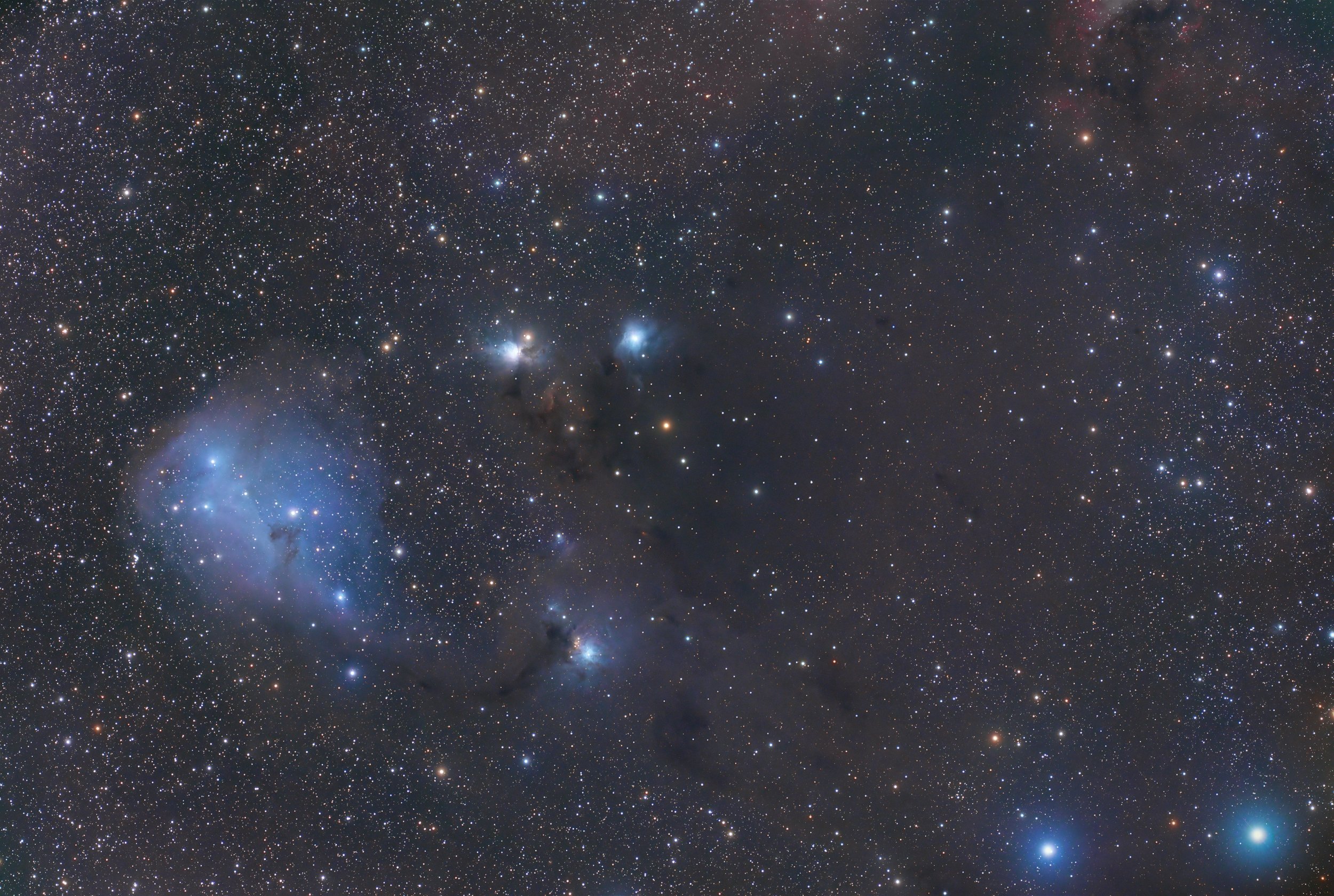
AAPOD2 Image Archives
Centaurus A (NGC 5128)
Centaurus A, also known as NGC 5128, is one of the most peculiar and studied galaxies in the southern sky. Lying about 13 million light-years away, this massive elliptical galaxy is strikingly bisected by a dark lane of dust—evidence of a galactic merger that fuels both its active nucleus and intense star formation.
This LRGB composition showcases the galaxy’s chaotic structure in vivid detail: the bright, rounded halo of old stars contrasts sharply with the dense, warped band of interstellar dust and gas slicing across its core. Radio observations reveal powerful jets emanating from a central supermassive black hole, a telltale sign of an active galactic nucleus.
Centaurus A offers a fascinating glimpse into the dynamic processes that shape galaxies over cosmic time—where destruction and creation occur hand in hand.
m82, Cigar or butterfly?
The Cigar Galaxy, known as M82, is a striking starburst galaxy located approximately 12 million light-years away in the constellation Ursa Major. Captured in remarkable detail, this image showcases the galaxy’s turbulent core, where intense gravitational interactions—primarily with its neighbor M81—have triggered a frenzy of star formation.
A defining feature of M82 is its powerful superwind, a result of energetic stellar processes ejecting gas and dust perpendicular to the galaxy's plane. This outflow is highlighted by reddish filaments of ionized hydrogen (H-alpha), which stretch far into intergalactic space. In narrowband imaging, especially in the H-alpha and OIII bands, these filamentary structures become more prominent, offering insights into the dynamic processes shaping the galaxy.
M82 hosts one of the brightest supernova remnants ever recorded, SN 2014J, which became visible to amateur astronomers in 2014. This event provided crucial data for understanding Type Ia supernovae and measuring cosmic distances. Additionally, observations in X-ray wavelengths have revealed that M82's core likely harbors a hidden intermediate-mass black hole, adding further intrigue to its dynamic environment.
M82's edge-on orientation reveals its intricate dust lanes and bright star-forming knots, contributing to its chaotic and vibrant appearance. Despite its compact size, this galaxy is a powerhouse of stellar birth, producing stars at a rate ten times higher than the Milky Way.
The Bear's Paw
Nestled within the vast reaches of interstellar space, The Bear’s Paw—a striking deep-sky object—unveils its intricate structure through this detailed LRGB image. Captured under the skies of Modena, Italy, this celestial marvel showcases a dynamic interplay of gas, dust, and starlight, revealing the delicate tendrils and luminous knots that define its enigmatic form.
This deep-space structure is composed of dense molecular clouds and ionized gas, sculpted over millennia by the radiation and stellar winds of young, massive stars. The image’s luminance layer enhances the intricate filaments of the nebula, while the red, green, and blue channels bring forth the subtle hues of ionized hydrogen, oxygen, and sulfur. The delicate balance of light and shadow hints at ongoing star formation within the nebula’s depths, where gravitational forces are shaping the next generation of celestial bodies.
The surrounding cosmic environment is punctuated by a scattering of distant galaxies and foreground stars, offering a glimpse into the vastness of the universe beyond. As light from The Bear’s Paw traverses the cosmic expanse to reach our telescopes, it tells a silent but profound story of stellar birth, evolution, and the forces that govern our universe.
M98, the blue young stars nursery
M98, a mesmerizing spiral galaxy residing in the constellation Coma Berenices, stands as a testament to the elegance and complexity of cosmic structures. Situated approximately 44 million light-years away from Earth, this celestial beauty captivates astronomers with its graceful arms and intricate features.
As a member of the Virgo Cluster of galaxies, M98 boasts a prominent central bulge surrounded by sweeping spiral arms adorned with bright knots of star formation. These arms, delicately intertwined with dust lanes, weave a mesmerizing tapestry across the galactic disk, offering a glimpse into the dynamic processes at play within this stellar metropolis.
M98's allure extends beyond its visible features, as astronomers study its morphology and stellar populations to unravel the mysteries of galactic evolution. From the dynamics of star formation to the interactions with neighboring galaxies, M98 serves as a cosmic laboratory for understanding the intricate dance of matter and energy in the universe. As scientists continue to probe its depths, M98 continues to inspire awe and wonder, reminding us of the boundless beauty and complexity of the cosmos.





